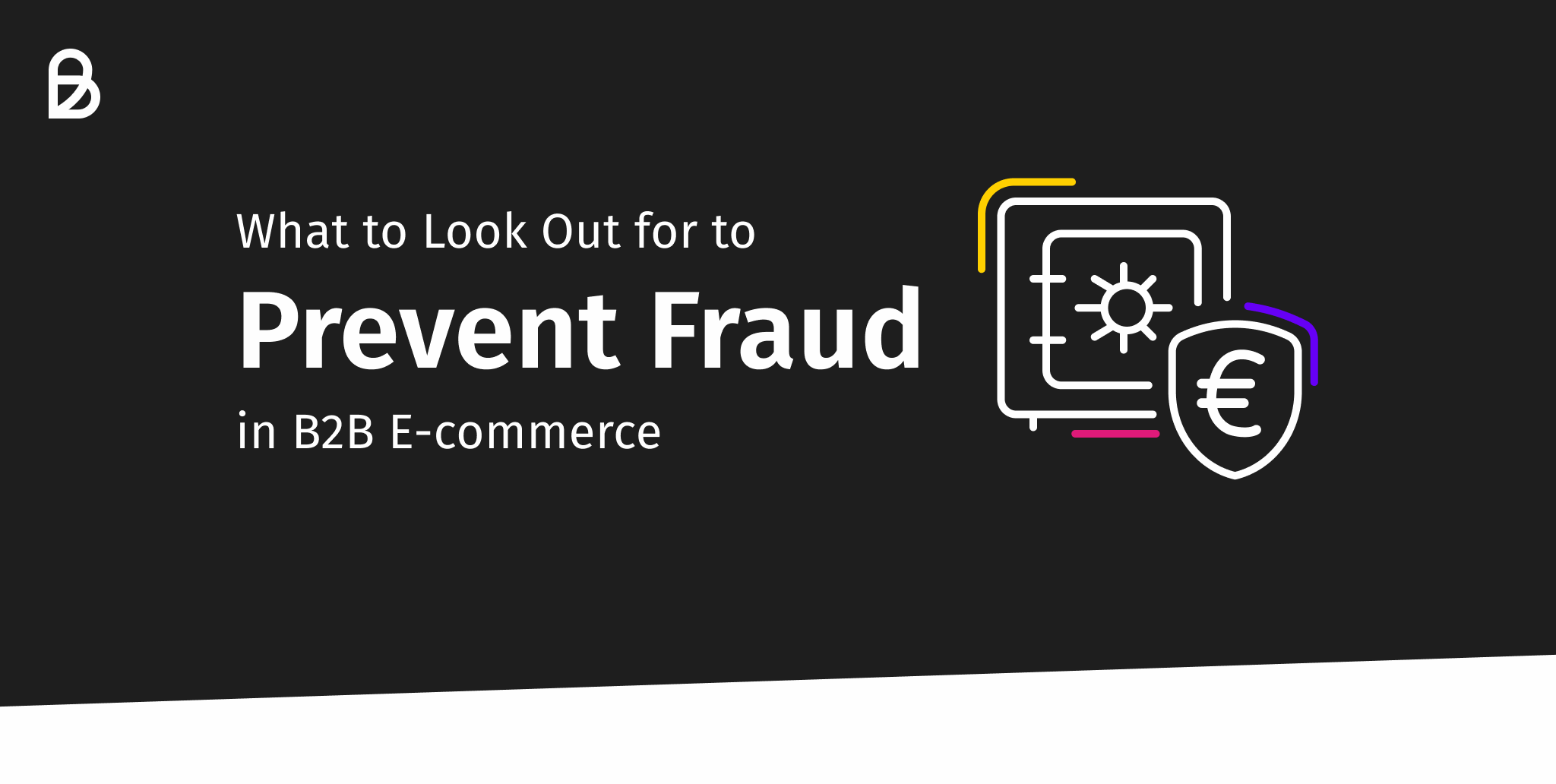What to Look Out for to Prevent Fraud in B2B E-commerce
Online trade took a hit last year due to the macroeconomic circumstances affecting the globe. However, the signs for e-commerce continue to point to growth. It's not just consumer sales that are rising rapidly, estimates suggest that businesses will also make more than half of their purchases online by 2025. As digital sales channels become increasingly important for trade with business customers, online retailers are following the trend and expanding their range of B2B (business-to-business) services.
However, shifting online comes with risks, especially considering that B2B purchasing is even more complex than B2C (business-to-consumer) trade. This is particularly relevant when it comes to fraud prevention. And In electronics retailing specifically, where margins are low and shopping cart values are high, fraud poses a significant problem for those who are unaware.

Here's how B2B e-commerce fraud can play out:
A report from Cybersource found that one of the most common and costly methods fraudsters use against B2B merchants is identity fraud. Approximately one-third of all merchants worldwide fell victim to this technique last year, with European stores recording even more cases than the previous year.
While authenticating private customers in B2C is relatively easy, the same task becomes far more complicated in B2B. One of the main complications is the accessibility of businesses' information, such as name, business form, and address, which skilled fraudsters can exploit to impersonate a company.
Let’s take a look at an example:
A popular method used by fraudsters is placing a large order that is typical for most businesses, such as 11 laptops, and using the data of any company to place the order. By selecting Payment by invoice, the fraudster can delay payment to a later date. And to prevent the scammed goods from reaching the company, fraudsters often choose a different delivery address than the company's address. Meaning, if merchants fail to match the company name to the delivery address, this is a highly effective method.
Another possibility is for fraudsters to initially enter the company's address when placing the order but change the delivery address after the order has been placed, say, to a DHL packing station. Finally, it's important to note that fraud attacks in B2B rarely occur in isolation but are strongly interconnected. Identity theft, for example, can go hand in hand with phishing.
What can B2B merchants do to prevent fraud?
It's important to know that there is no magic bullet to prevent all fraud threats in online commerce. Instead, online stores should rely on a combination of strategic and tactical measures, tools, and probability-based fraud models to effectively protect themselves. That being said, here are a few tips:
Check if the ordering company exists: The first step for merchants should be to evaluate whether the ordering company actually exists and cross-reference the company data. We know from our experience at Billie, that a significant portion of fraud-associated traffic often comes from non-existent companies. Merchants should also check if the company data, such as name and address, matches and verify orders that are made using disposable email addresses. Additionally, cross-checking information from various data sources can help in validating the ordering company.
Monitor customer ordering behavior: Online stores should closely monitor their business customers' ordering behavior for any unusual patterns. This includes being cautious of multiple orders made in quick succession by new customers, especially if they involve expensive items like cell phones, laptops, or televisions that are easy to resell. Implementing fixed daily shopping cart limits can be an additional measure to mitigate fraud risks, considering that order volumes in B2B are generally higher than in B2C.
Thorough creditworthiness and authenticity checks: Finally, one option is approving invoice purchases for business customers only after conducting thorough creditworthiness and authenticity checks. However, the challenge here is that this requires extensive manual effort and costs. Therefore, Payment by Invoice is usually reserved for large new customers or key accounts. Orders with low sales potential, such as guest purchases or smaller new customers are usually excluded from using Payment by Invoice.
B2B merchants that sell to around 100 customers or less usually don't have a problem with customer authentication and assessment. However, merchants with a large customer base should rely on an intelligent, scalable, technical solution that scores customers in real-time and uses multiple data sources plus customer history. In doing this, merchants enable Payment by invoice for a large number of business customers. And while some merchants are trying to do this using an in-house solution, others may consider investing in an external AI-powered invoice purchasing solution that thoroughly supports accurate legitimacy checks and reduces non-payment risks.